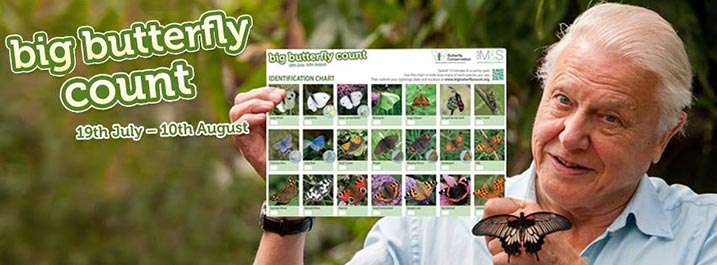Help us break butterfly count record says David Attenborough
 Sir David Attenborough launched the 2014 Big Butterfly count at WWT’s London Wetland Centre this morning and WWT’s nine Wetland Centres across the UK are inviting you to come along to help count a million butterflies across the country.
Sir David Attenborough launched the 2014 Big Butterfly count at WWT’s London Wetland Centre this morning and WWT’s nine Wetland Centres across the UK are inviting you to come along to help count a million butterflies across the country.
WWT’s London Wetland Centre’s, a great place to see beautiful species like the small copper butterfly which chooses a piece of bare ground and stoutly defends it against all other insects!
Every year, WWT helps Butterfly Conservation invite as many people as possible to have fun counting butterflies, which at the same time helps researchers find out how our much-loved native species like the small copper are faring.
Last year, 800,000 butterflies were counted by 46,000 people. So this year Sir David is hoping that, together, we can break that record and count more than a million.
WWT Vice President and Butterfly Conservation President Sir David Attenborough said:
“Every single person taking part in the Big Butterfly Count this summer can produce a statistic that is of real value as their records help build a picture of how butterflies are faring and how we can best conserve them.”
Clearly impressed with the London Wetland Centre which he opened in 2000, Sir David also praised the pioneering spirit of Sir Peter Scott:
“WWT Wetland Centres are a British innovation, pioneered, masterminded and invented by Sir Peter Scott, one of the 20th century’s greatest naturalists. They are fantastic. They bring people and wildlife closer together than anywhere else I can think of. They’re something this country should be very proud of.”
WWT Chief Executive Martin Spray said:
“WWT is delighted to host the launch of the Big Butterfly Count once again. Our visitors often tell us how much they enjoy seeing butterflies at our Wetland Centres. The Count is a wonderful way to help the natural world by doing just that – enjoying spotting butterflies.”
Butterflies are a key indicator species of the health of our environment – if they’re struggling, then many other species like birds, bees and bats are struggling too. Butterfly numbers have improved after a terrible 2012 but are still below average. Three quarters of the UK’s butterflies are in decline, including the common copper, and a third are in danger of extinction.
Butterflies are just one of the many species you can see at WWT’s Wetland Centres among acres of beautiful watery landscapes. We’ve got water voles, ducks, dragonflies and much more. Some Wetland Centres have exotic wetland birds from around the world like flamingos or Japanese cranes. You can even feed the rarest goose in the world – the nene – which WWT saved from extinction.
Get involved with the Big Butterfly Count and download the identification chart.
Learn more about the Big Butterfly Count

